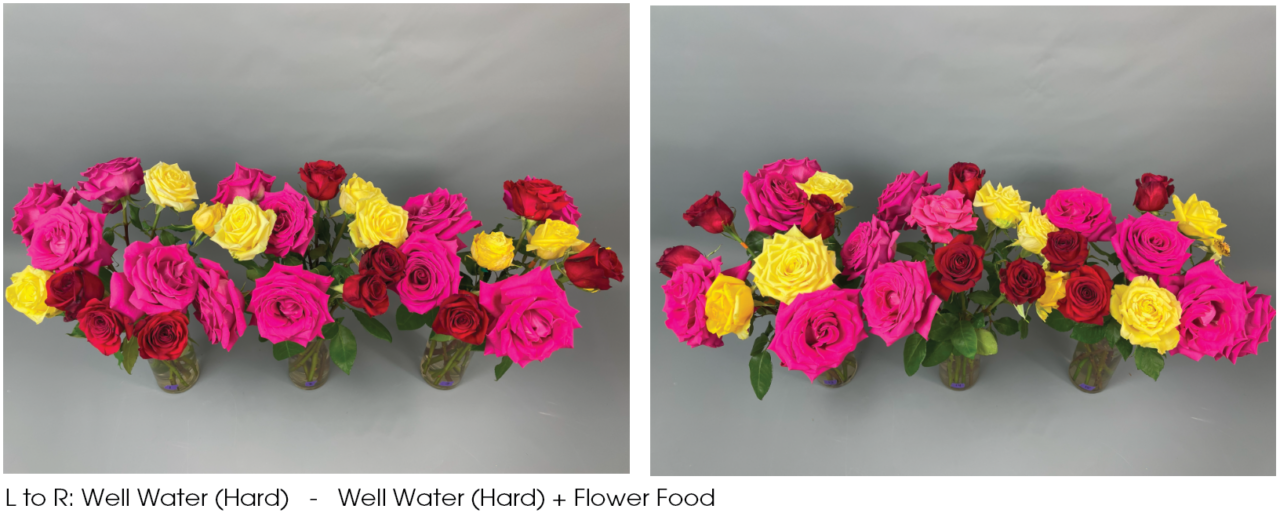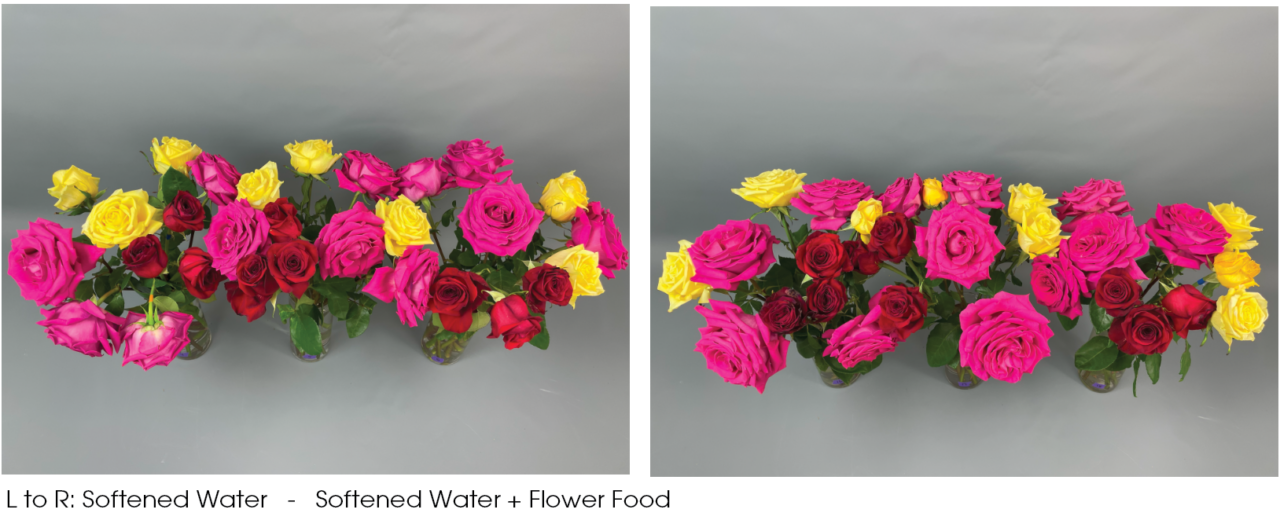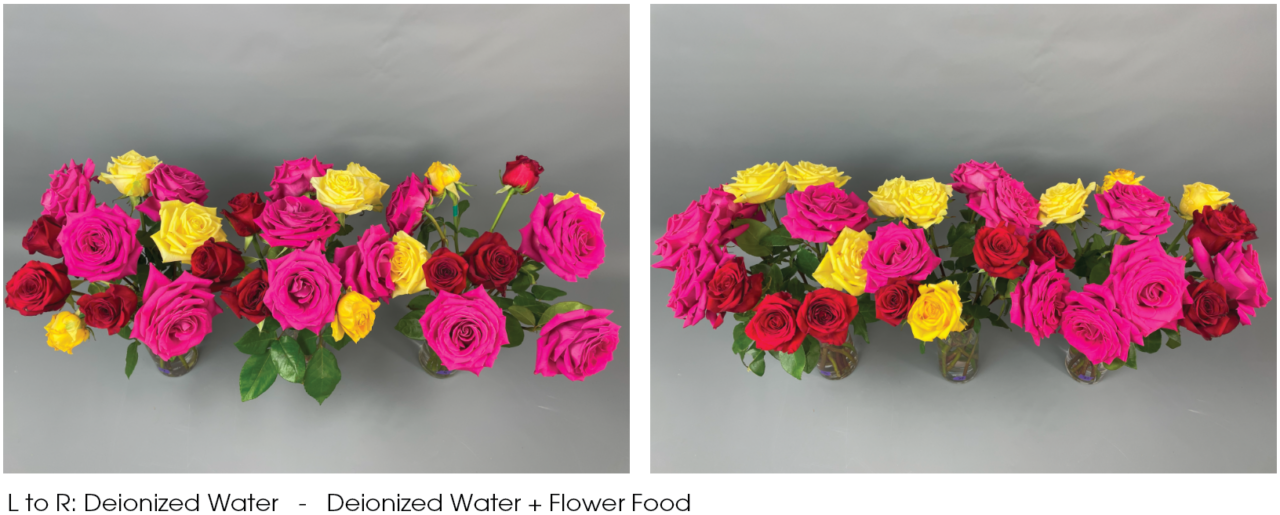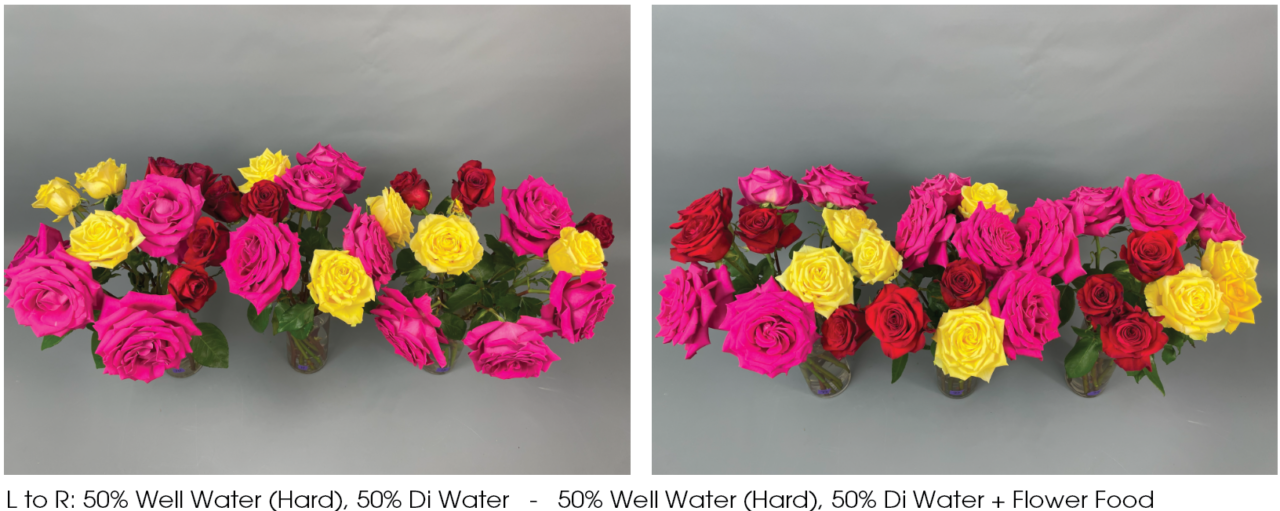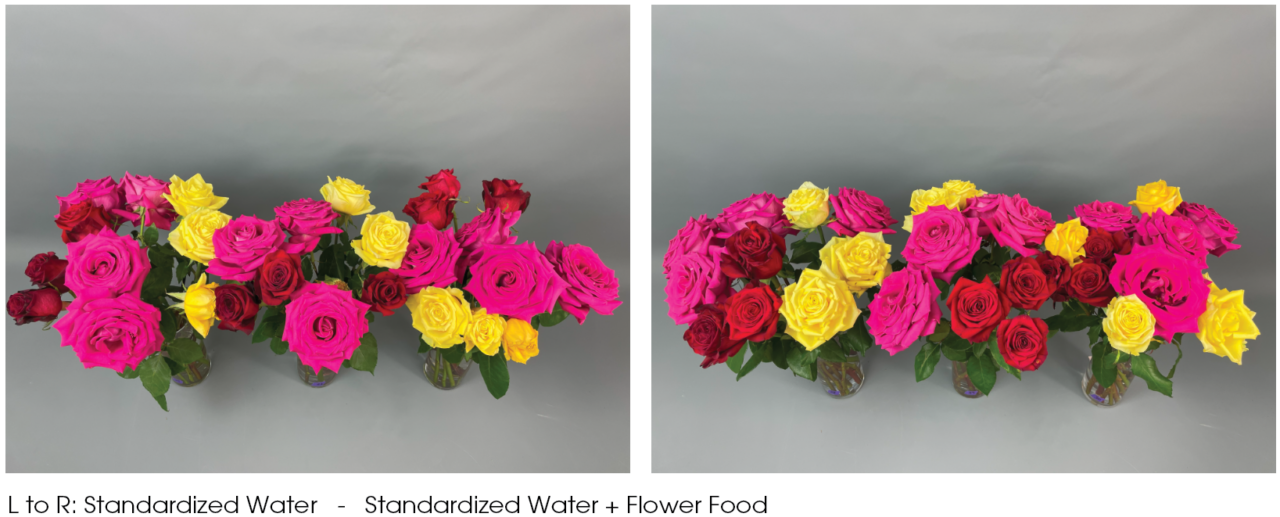Managing Hard Water to Maximize Vase Life of Cut Roses
Research Update February 2025, powered by FloraLife
Garry Legnani – Senior Postharvest Scientist, FloraLife
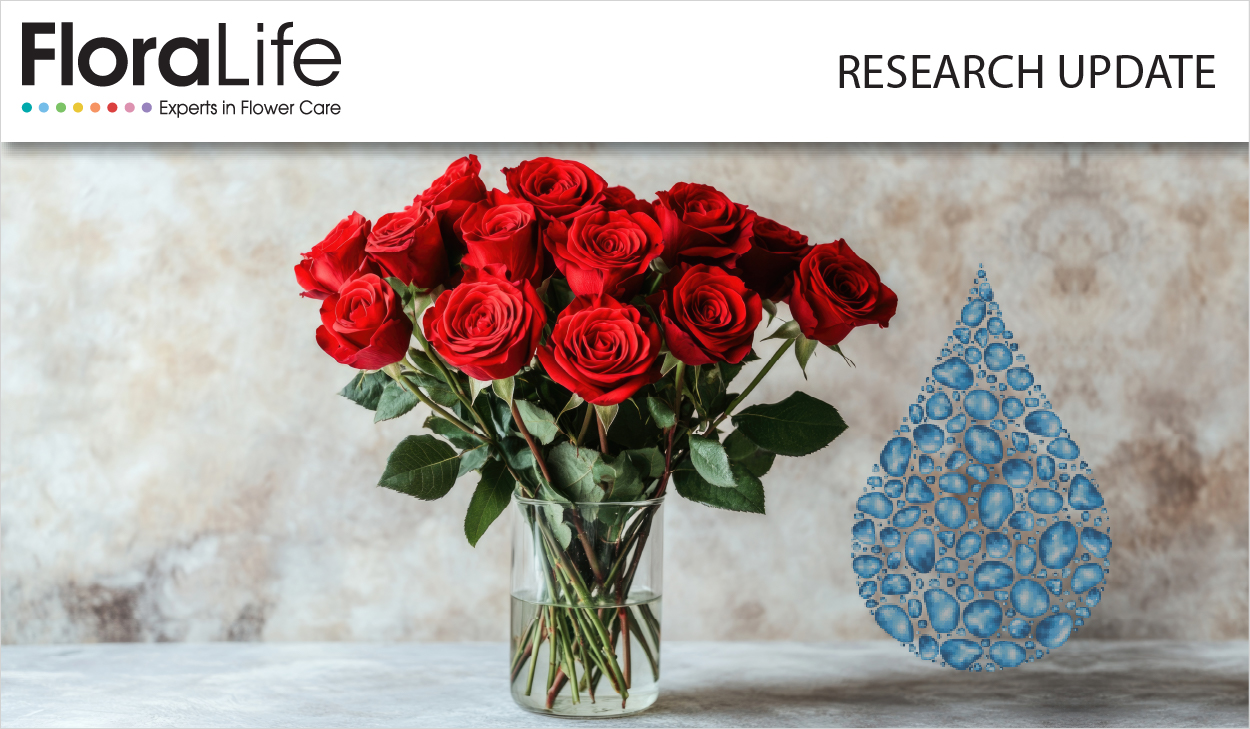
Introduction:
Hard water, defined as having high levels of calcium and magnesium salts, is a challenge for many in our industry. Excessive hardness can cause mineral deposits to form in pipes, sinks, buckets and vases. It is often associated with high alkalinity which can inhibit the ability of flower foods to lower pH of bucket and vase solution to the optimum range for cut flowers. We published a research update in August of 2024 that reported on the effects of water softeners on water chemistry and flower food. In that update we went in depth about water chemistry terms (pH, hardness, alkalinity, and conductivity). I encourage you to refer to that update if you have questions about the water chemistry terms used in this update: Research Update August 2024
The objective of this update is to test the effects of hard water on vase life of roses with and without flower food and test the various options available to customers to alleviate hard water challenges.
Methods:
We obtained hard well water from a source in Northeast Ohio that was plumbed into a water softening system. Vase life of roses was evaluated in the following treatments. Table 1 lists the vase solution treatments and their respective water chemistry measurements.
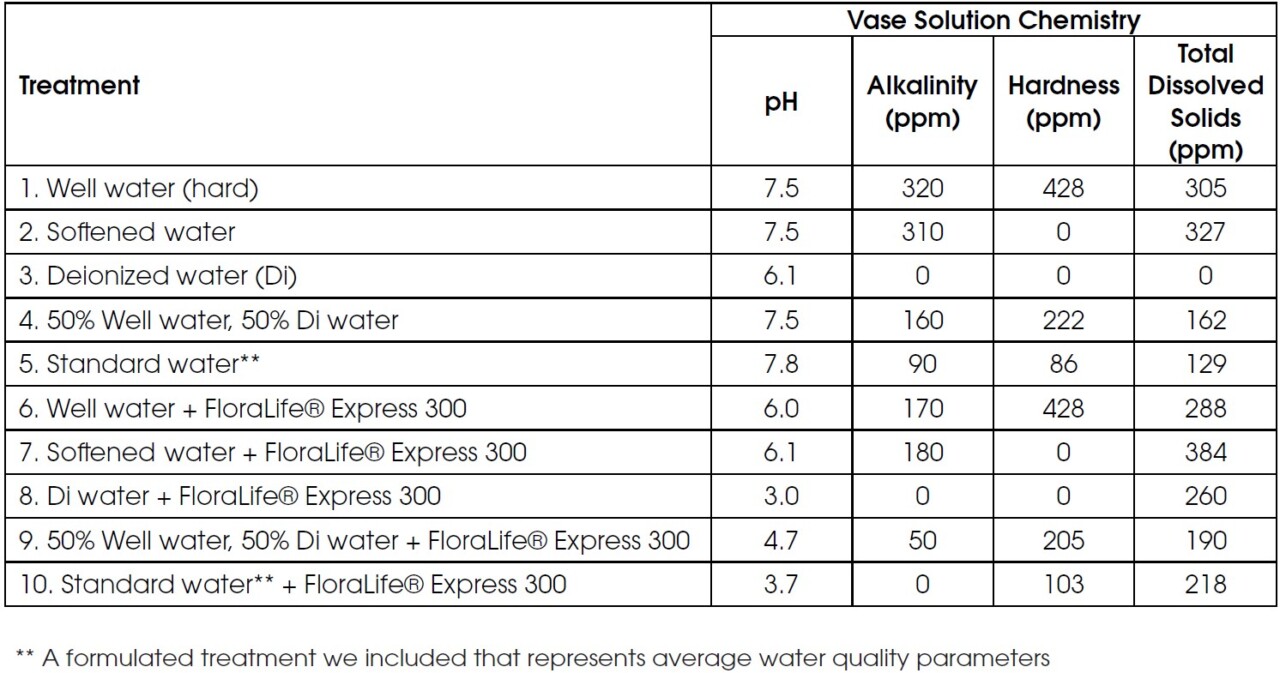
‘Freedom’, ‘Pink Floyd’, and ‘Stardust’ roses were obtained dry-packed directly from a farm in Colombia and shipped to our lab by a local wholesaler. Vase solutions were formulated in 3-liter volumes and equally divided into three 1-liter vases. Flowers from each bunch of 25 stems were processed, sized, re-cut and randomly distributed into vase treatments. As solutions were consumed, treatments were replenished with the corresponding treatment water type without flower food. The following data was recorded.
- Vase solution uptake on day 5 (ml)
- Vase solution pH on day 5
- Combined vase life (days)
- Relationship between vase solution pH, solution uptake, and vase life
Results and Discussion:
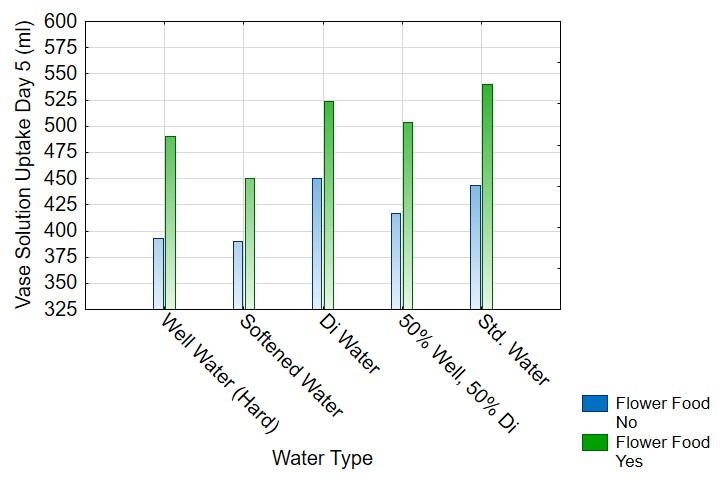
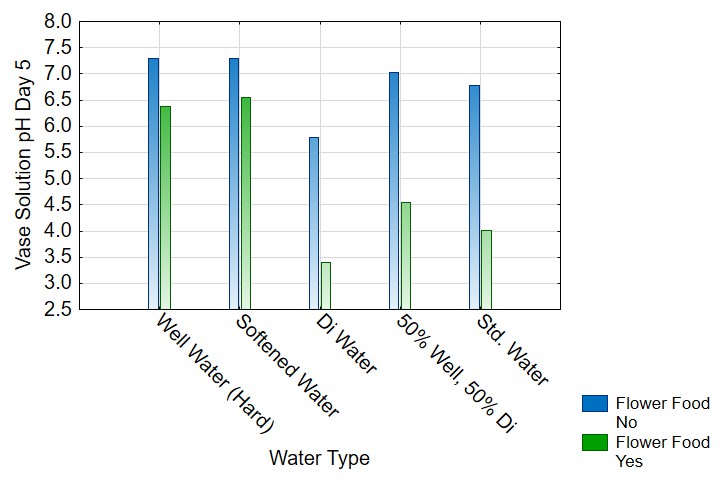
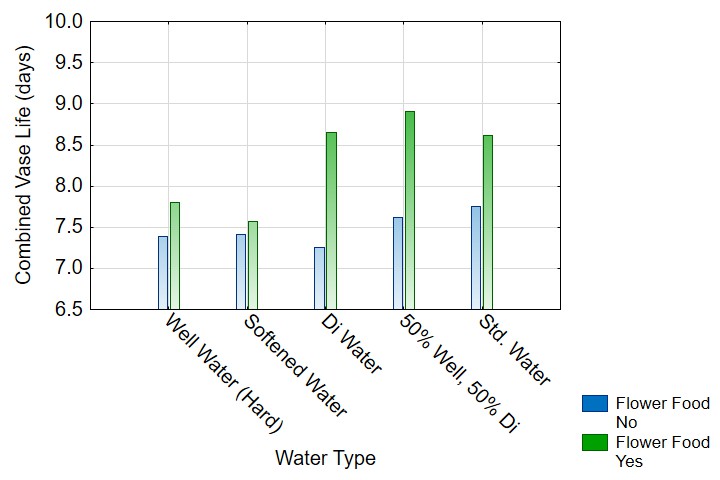
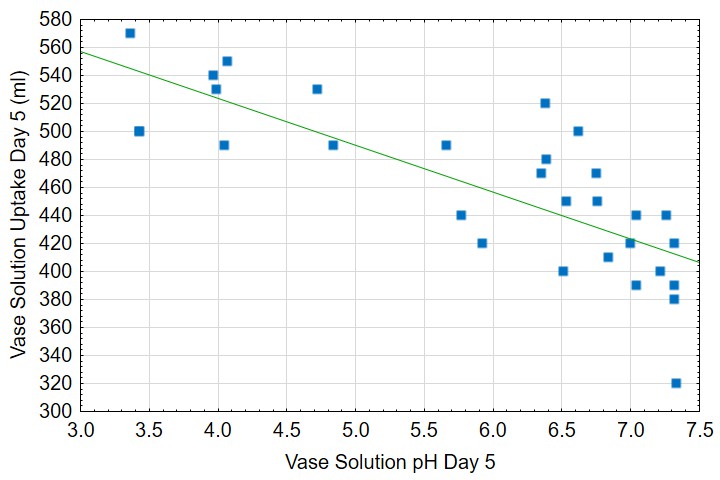
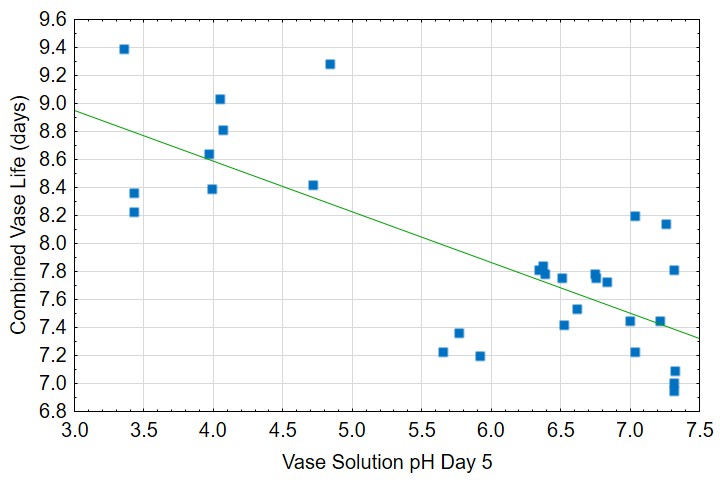
- Deionized water and standardized water showed the highest solution uptake with and without flower food followed by the 50% well water, 50% Di water combination. These treatments also showed the lower vase solution pH with Di water + flower food being the lowest.
- Softened water showed the lowest solution uptake with flower food and showed the highest level of dissolved minerals. While softened water resulted in a hardness of zero, alkalinity was not affected, and flower food was not as effective at reducing pH.
- The 50% well water, 50% Di water combination showed the longest vase life with flower food followed by Di and standardized water.
- Flower food had almost no effect on vase life when added to softened water, but flower food showed significant increases in vase life when added to the other water types.
- When we plotted vase solution uptake (ml) vs. vase solution pH we observed increased uptake with decreasing pH.
- When we plotted combined vase life vs vase solution pH we observed increased vase life with decreasing pH.
Conclusions:
This data indicates that softened water showed the lowest solution uptake and minimal benefit to vase life of roses with the addition of flower food. Although Di water showed good vase life when combined with flower food, the zero alkalinity makes Di water less forgiving if flower food is mistakenly overdosed – this may result in pH values below the recommended range of 3.0 to 5.0. The 50% well water, 50% Di water combination showed the longest vase life when combined with flower food, exceeding our standardized water, and providing significantly longer vase life than the hard water. In addition, we would like to mention that Floralife® produces specialty flower foods formulated for hard water conditions. The use of these products will be reported in future research updates.
Photos: Day 7 of Consumer Vase Life Evaluation
